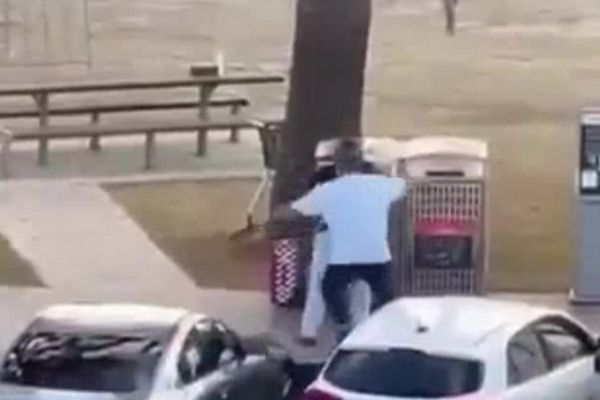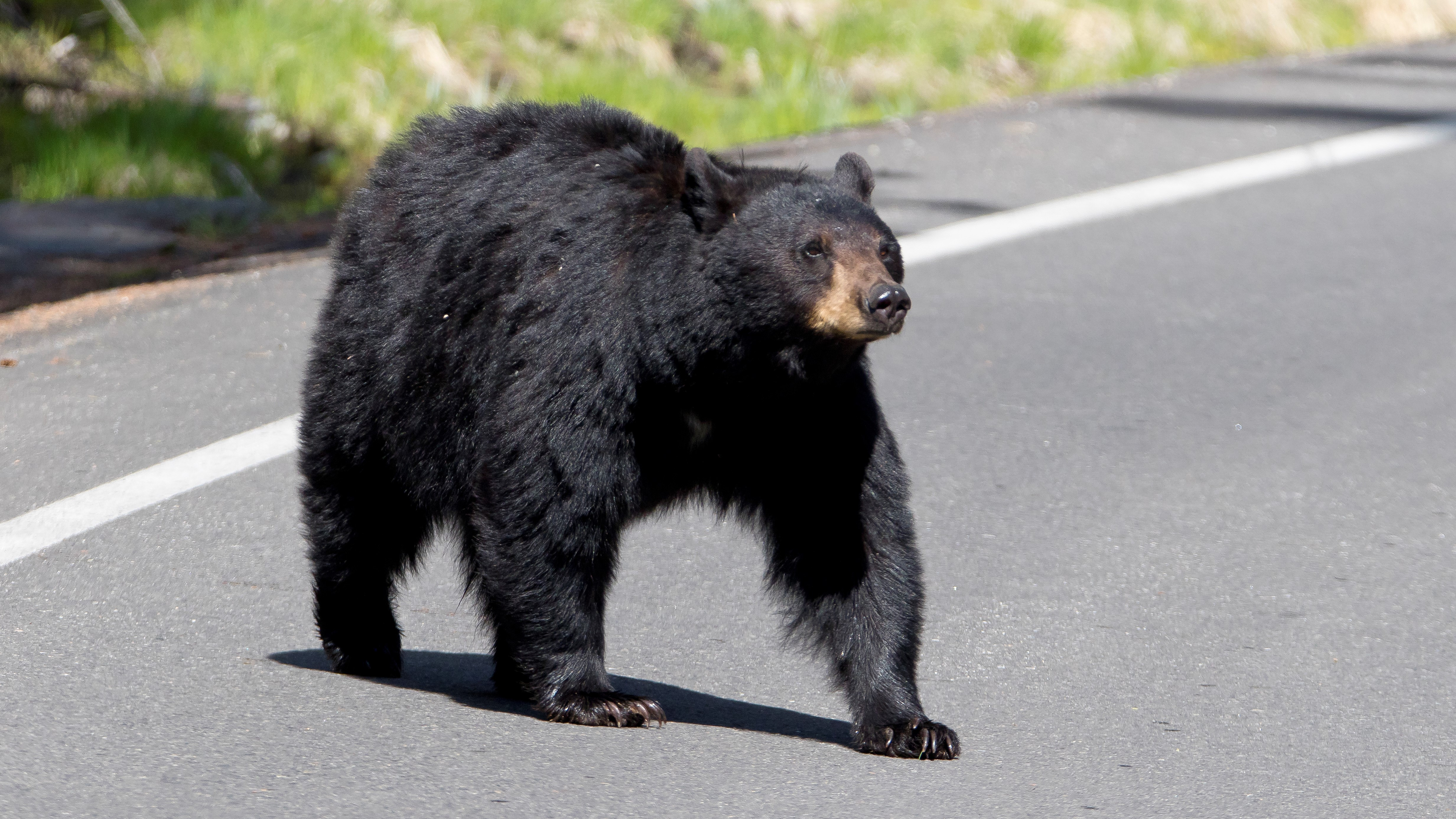
Picture the scene. You’re driving through Lamar Valley in beautiful Yellowstone National Park when suddenly, a dark moving figure off to the side of the road catches your attention. A bear and her cubs!
There’s nowhere to pull off, but no way you’re missing out on this wildlife viewing opportunity, plus the two cars ahead have already pulled over. So you pull as close to the side of the road as you can and jump out without even lacing up your hiking boots to get a closer look.
Only a few minutes go by before there are dozens of cars half-parked on the road, their owners and passengers milling about trying to get the best shot, and a queue of gridlocked cars snaking a half mile in either direction. You’ve successfully created your first bear jam. And that’s a problem.
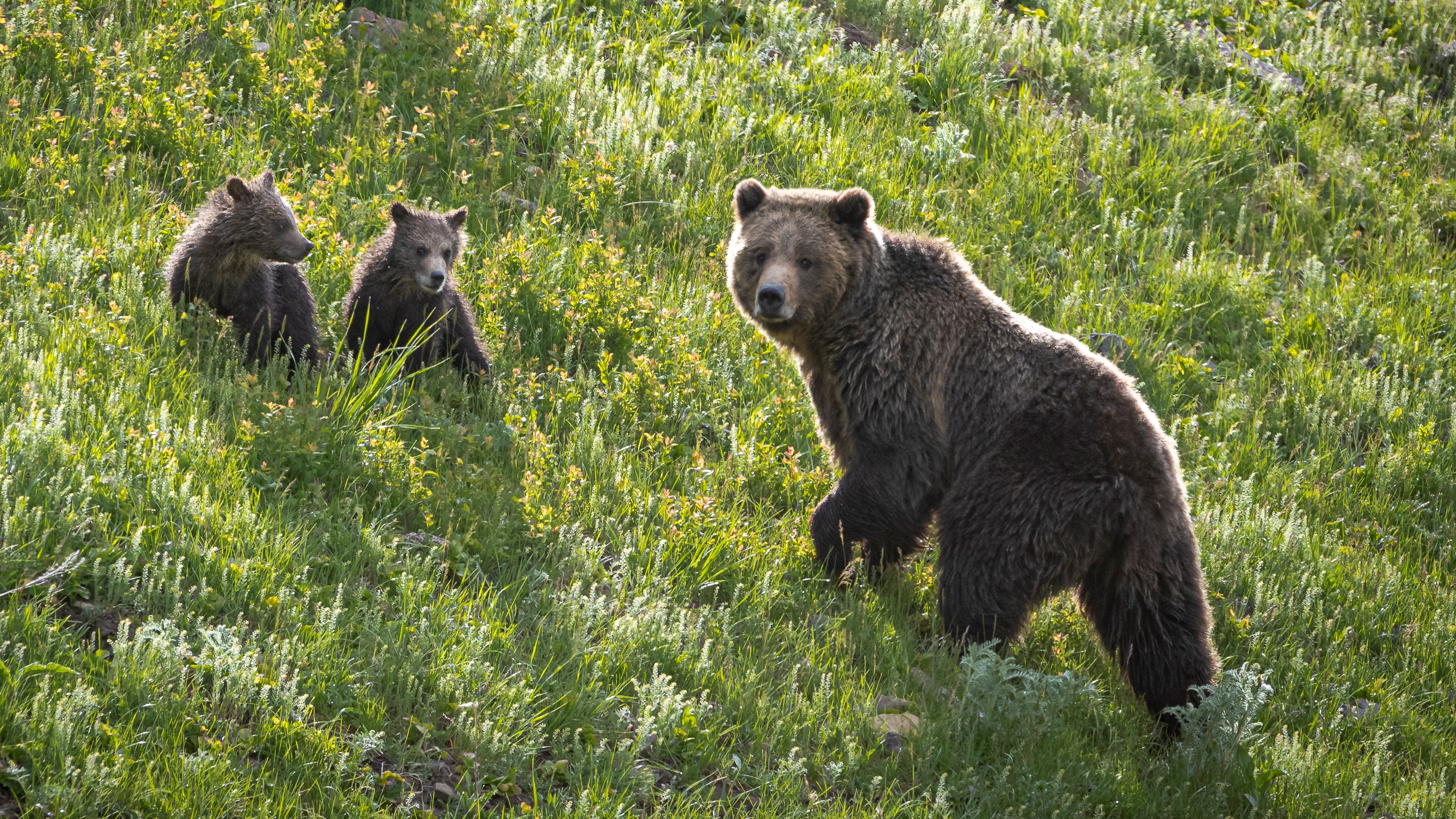
What is a bear jam?
Sadly, a bear jam doesn’t involve a bunch of bears shucking and jiving to some sweet tunes, though that would be cool. A non-technical term, “bear jam” is now frequently used by the National Parks Service to describe the increasingly common phenomenon of traffic jams forming around bears on the side of the road.
Now naturally, you should be driving through any National Park with caution, and if you see a bear on the side of the road, or a moose, bighorn sheep or any other big mammal for that matter, you should slow down.
A bear jam occurs when the flow of traffic becomes so slow as to impede other drivers, and often involves multiple cars stopping or illegally parking on the roadside in order to watch – or photograph – a bear.
Bear jams have become such a problem that some spots like Canada’s Yoho National Park have enacted temporary laws restricting stopping or slowing to view wildlife.
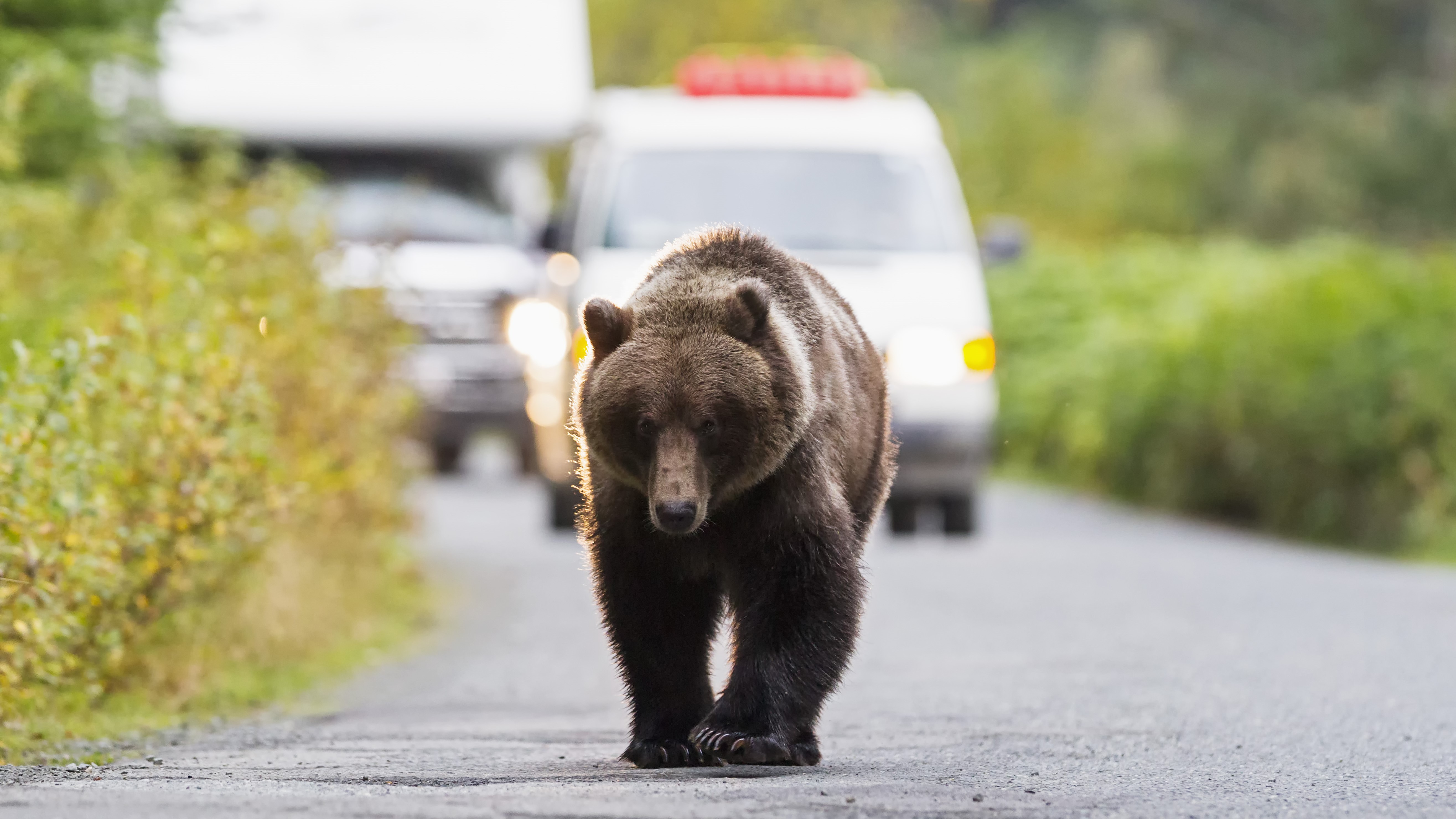
What's the problem with bear jams?
Obviously no one wants to hit a bear with their car. Though there are no national figures on bear deaths caused by vehicles, the state of Pennsylvania alone reports between 400 and 500 bear deaths caused by cars each year, and the National Parks Service blames speeding. And for what it’s worth, your car won’t do so well in that kind of situation either.
So you slow down when you see a bear. But doesn’t that just make everything safer?
The problem arises when drivers start to crawl at a rate where other cars might attempt to pass them, or pull over illegally, often on stretches of road where there is nowhere safe to do so. Then they might roll down their windows or, worse still, get out of their cars and start wandering around trying to take photographs of the bears, crowding bears and even chasing them. Meanwhile, other drivers are trying to continue through the area but are being forced over the median line, obstructing oncoming traffic.
Add to all this the presence of a bear and maybe a couple of cubs scurrying around the road and before you know it, you’ve got yourself a bear jam. Bear jams almost always take place in areas where your line of sight is restricted and they pose a hazard for other drivers and endanger the lives of people and bears on the road. The rare white bear that Yoho enacted temporary laws to protect was sadly killed by a car on the same day her cubs were struck in a separate incident.
In a video about bear jams created by the NPS, Yellowstone rangers explain that large numbers of humans stopping on the roadside to watch bears frolicking in meadows also means bears get habituated to humans and may associate them with food, if you’re foolish enough to feed them. When bears lose their fear of humans, it can mean they end up being euthanized, and that’s a needless tragedy.
Furthermore, causing a bear jam could land you with huge fines. When Yoho imposed temporary speed limits, penalties ranged from a $115 ticket to a mandatory court appearance and a maximum fine of $25,000, while down in Grand Teton National Park, a wildlife photographer just racked up $20,000 worth of legal fees fighting a speeding ticket he incurred when photographing an injured grizzly bear. Bear jams can be costly and dangerous to everyone around.
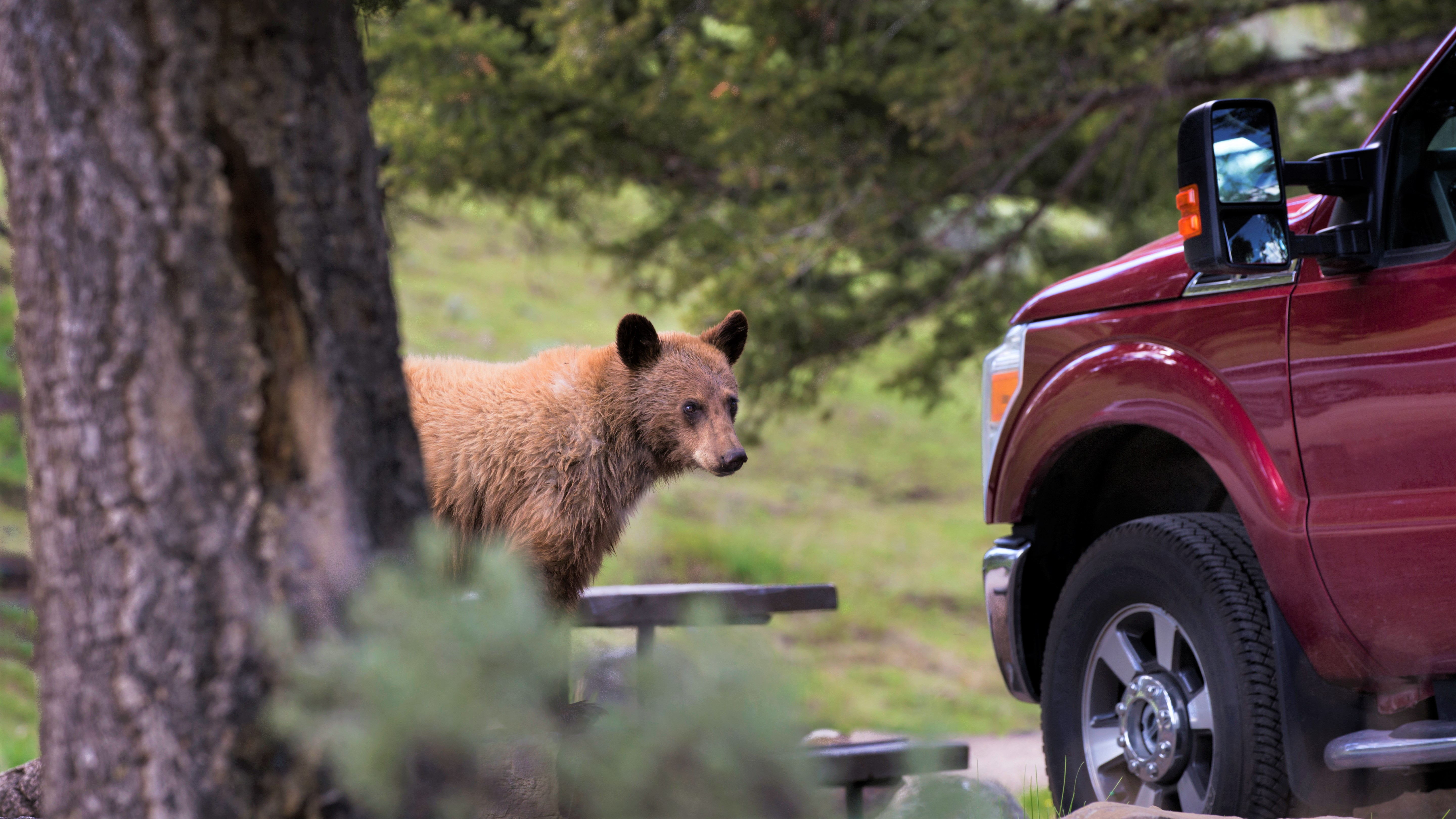
How to avoid bear jams
No one expects you to not observe, or even photograph, a bear when you see one from your car. Bears are incredible creatures and parks like Yellowstone are set up to maximize your wildlife opportunities.
However, that leaves the burden of responsibility on you to not create a dangerous situation, which if nothing else might cause you to be publicly shamed on Instagram.
The good news is that there are steps you can take to avoid causing a bear jam. The following is official advice from Yellowstone rangers on avoiding bear jams:
- Obey all traffic laws and posted speed limits at all times.
- If you see a bear on the side of the road, slow down and put your hazard lights on to alert the driver behind you.
- Only stop if there is a designated pull-out where you can legally and safely do so.
- If you are safely parked, do not exit your vehicle. Standing in the road increases the danger to everybody. Photograph the bear from inside your car, or enjoy it from a distance using your binoculars.
- Let animals decide where they’re going to go, and give them the right of way. Stay at least 100 yards away from bears. If they move closer to you, it’s your job to back off.


